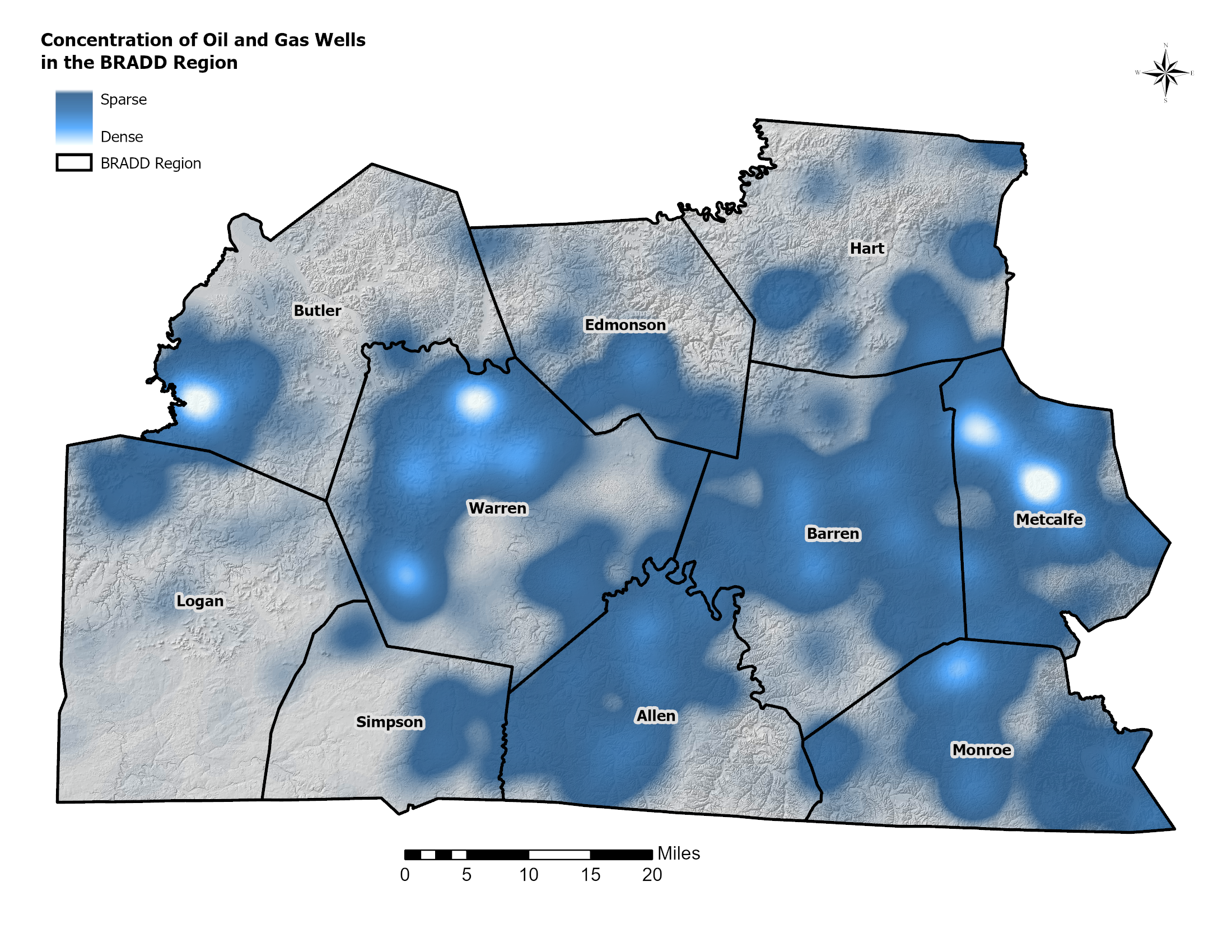Hazardous Material

Hazardous materials (hazmat) incidents involve accidental or intentional release of chemicals, gases, or other substances that pose risks to human health, property, and the environment. In the BRADD region, such incidents may arise from industrial facilities, transportation (rail, highways, pipelines), storage tanks, or waste handling operations. While many releases are small or contained, major events can trigger evacuations, environmental contamination, and long-term remediation. Incorporating hazardous materials into hazard mitigation planning enables jurisdictions to evaluate chemical risk, map potential exposure zones, and adopt land-use, response, and prevention strategies to reduce impacts.
Types of Hazardous Material
The Environmental Protection Agency (EPA) defines hazardous materials as liquid, solid, contained gas, or sludge wastes that contain properties that are potentially harmful to human health or the environment. Hazardous materials are typically released in the form of spills, leaks, or vapor emissions. These are known as either a point source release that can be traced back to a single origin, or a non-point source releases that occur incrementally, slowly polluting the environment.
These chemicals are used in industry, agriculture, medicine, research, and consumer goods. Hazardous materials come in the form of explosive flammable and combustible substances, poisons, and radioactive materials. In all its forms, hazardous materials can cause death, serious injury, long-lasting health effects, along with damage to buildings, homes, and other property.
Facilities that Contain Large Quantities of Hazardous Materials
Many products containing hazardous chemicals are used and stored in homes routinely. These products are also shipped daily on the nation’s highways, railroads, waterways, and pipelines. Varying quantities of hazardous materials are manufactured, used, or stored at an estimated 4.5 million facilities in the United States from local dry cleaning establishments, service stations, and garden supply stores to hospitals and major industrial plants. Facilities that contain large quantities of hazardous materials are regulated to reduce the risk of point source spills. These facilities are categorized as Tier II facilities, which are defined as those that are equal or exceed the thresholds of hazardous materials under Section 311(e) of Title III of the Superfund Amendments and Reauthorization Act (SARA).
Tier II facilities are required to complete a Tier II Emergency and Hazardous Chemical Inventory report by the Kentucky Emergency Response Commission (KyERC). These facilities are also required to report to the Local Emergency Planning Committee (LEPC) and local fire departments. Tier II storage facilities are required to comply with federal safety requirements and are regulated by the U.S. Environmental Protection Agency. Title III of SARA regulates the packaging, labeling, handling, storage and transportation of hazardous materials. The law requires facilities to furnish information about the quantities and health effects of materials used at the facility, and to promptly notify local and State officials whenever a significant release of hazardous materials occurs.
Other Federal laws that regulate hazardous materials include: Resource Conservation and Recovery Act of 1976 (RCRA), Hazardous Materials Transportation Act (HMTA), Occupational Safety and Health Act (OSHA), Toxic Substances Control Act (TSCA), Clean Air Act, and Norman Y. Mineta Research and Special Programs Improvement Act of 2004.
